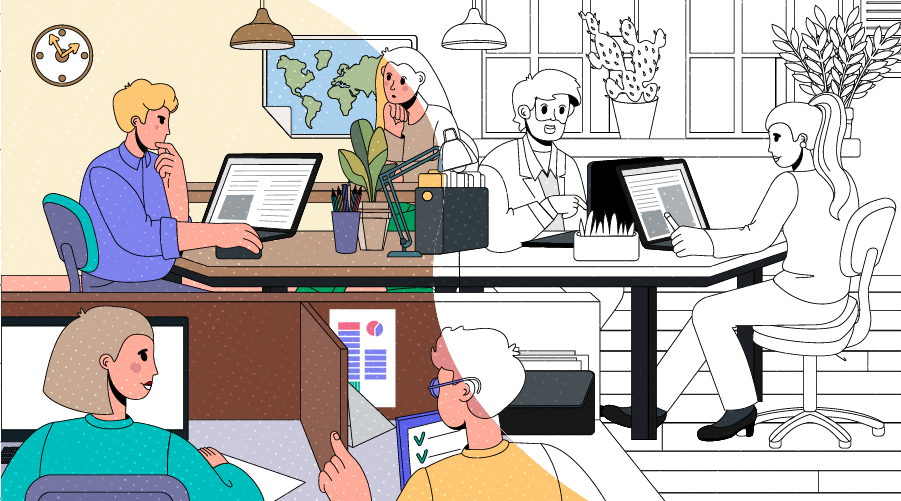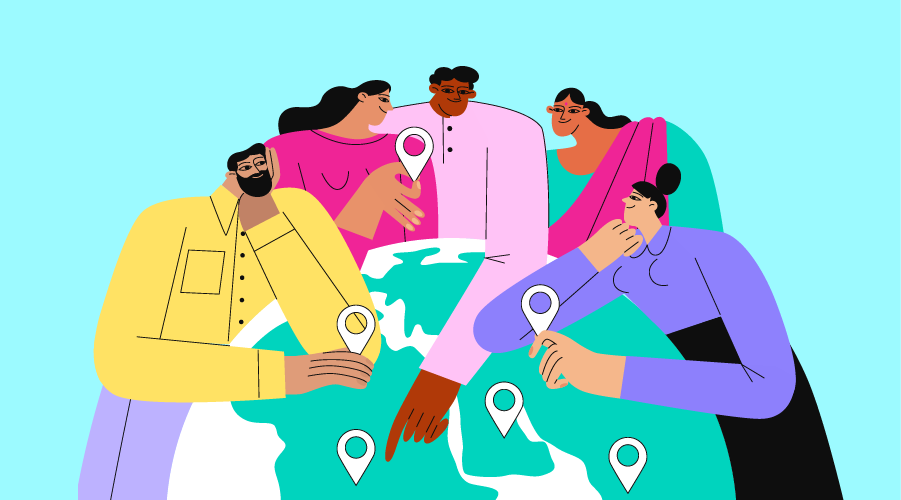- Have any questions?
- 888-432-8878
- steve@sebackground.com
Virtual Reality Training for Managers in a Post-COVID-19 Workplace
August 10, 2020
California judge orders Uber, Lyft to reclassify drivers as regular employees
August 11, 2020With the world on lockdown, organizations everywhere have had to rethink how they operate. But in the midst of the crisis, some have discovered something unexpected: productivity has gone up, not down.
A crisis like a global pandemic naturally triggers extreme anxiety and stress, but it also unleashes tremendous energy and motivation. If leaders keep threat levels low, they can harness that sense of urgency to achieve work results that would normally seem impossible.

But a crisis also presents a more consequential opportunity—for organizations to redefine who they are. Here are three ways organizations can use this momentum to transform their culture for the long term.
1. Design a More Human Organization
In the midst of a human rights crisis, when the inequity in our society has been laid bare so painfully, the most important way for organizations to be more human is by building a truly inclusive culture.
That doesn’t just mean increasing the diversity of the workforce since diversity without inclusion is nothing but a revolving door of talent. Organizations also need to make diverse voices heard. As we say at NLI, diversity means having a seat at the table, but inclusion means having a voice as well.
Importantly, however, it also doesn’t mean simply adding more people to the Zoom call or the email chain—overinclusion is a danger in itself. Rather, it means understanding how exclusion threatens people’s sense of fairness and their need to belong. And it means defusing those threats by actively sending signals of inclusion.
Building a truly inclusive culture is challenging. But creating a space that welcomes all voices—including dissenting ones—helps teams evaluate information more accurately and make better, more balanced decisions. The result is an organization that’s not only fairer, but also more effective.
The second part of building a more human culture is minimizing social threat in the workplace. But even after the pandemic subsides, threat can still undermine productivity. That’s because ordinary workplace interactions—including performance conversations, team meetings, and everyday conversations among colleagues—have the potential to be highly threatening.
To make workplaces more human, organizations need to redesign processes so as to minimize those threats and maximize social rewards. The best way to do that is by understanding the five social domains in which people are particularly sensitive to threat and reward: Status, Certainty, Autonomy, Relatedness, and Fairness, as captured in the NeuroLeadership Institute’s SCARF® Model.
By using the SCARF® model to understand the social impact we have on other people, leaders can minimize threat and help employees feel engaged, inspired, and motivated.
2. Cultivate a Growth Mindset Culture
Panic and paralysis aren’t inevitable reactions to a crisis. While some people fall apart, others rise to the occasion, seeing moments of extraordinary challenge not as threats, but as opportunities to learn, grow, and improve.
The difference is mindset. The way we respond in a crisis, studies show, is determined by the way we view challenges.
People who see the world through a fixed mindset see crisis as threatening. They assume their skills are innate and unchangeable, so when the going gets tough, they worry that challenges will be more than they can handle. They become anxious and defensive, getting bogged down in details and drama, losing track of the big picture and focusing on problems instead of solutions.
People who cultivate a growth mindset see crisis as an opportunity to learn, grow, and improve their skills. Because they believe their skills and abilities can be improved, they feel equipped to cope with whatever the crisis throws their way. For them, extraordinary situations can actually be energizing, helping them stay focused on solutions, goals, and improvement.
By cultivating a growth mindset culture, organizations can not only sidestep the hazards of crisis next time one comes along—they can leverage the current crisis to reinvent themselves and emerge stronger and more agile.
3. Make Learning Better, Not Worse
When governments issued lockdown orders and corporate offices shuttered, organizations had to shift their learning programs to a virtual format basically overnight. Unsurprisingly, most organizations executed this transition based on an imperfect understanding of the science of learning, making costly tactical mistakes like keeping content the same but chopping it down, running long, multi-hour online sessions and failing to find ways to get participants to engage with material between learning sessions.
Unfortunately, this well-intentioned approach dooms virtual learning to be a sort of “second-best modality”—tedious, boring, and ineffective.
It doesn’t have to be this way. By following the science of learning, organizations can create virtual learning programs that are in fact far more effective than traditional in-person learning workshops. Here’s how to design virtual learning from the ground up based on the way memory works in the brain.
- Be essential, not exhaustive. When it comes to virtual learning, it’s important not to try to be comprehensive. Cognitive capacity is a finite resource, and trying to include everything only overwhelms people. Instead, distill your content into a small set of essential habits.
- Harness the power of spacing. The single most effective method for maximizing long-term retention is to revisit new learning after time has passed. Rather than trying to cram a program into a single week, space learning sessions out over four weeks or more.
- Respect the limits of attention. If you’ve ever sat through a long university lecture, you know the brain loses focus when you try to pay attention to anyone thing for too long. To respect the limits of attention, break learning up into chunks of no longer than 50 minutes each.
- Design for behavior change, not NPS. Too often, learning is designed to be popular. But since real learning is effortful, programs that are fun and easy are less effective than those that challenge people to grow. Rather than trying to make learning fun, focus on activating habits.
By designing with the brain in mind, organizations can leverage this opportunity to make learning more effective than it’s ever been.
The post 3 Ways to Redefine Your Organization for a New Era appeared first on The HR Digest.
Source: New feed




